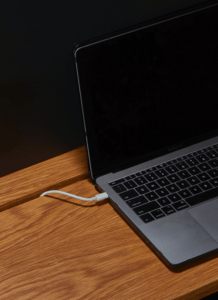
Photo by ROOM on Unsplash
Your laptop not charging fully should raise a concern that something is going wrong. From declining battery health to charger problems, to update issues, the list of potential causes is growing. Below are a few tips that you can try out when you notice your laptop is not charging fully.
Run a battery troubleshoot:
If you notice your battery is not charging fully, the first thing to do is to troubleshoot to check and solve the problem after completing the process check if the problem is resolved.
Inspect your charger to see if it is connected corrected to a power source:
You should ensure your laptop’s power cable is connected correctly to a power source. Also, check for power surges from the supply.
Try another Charger:
Your charger might be the reason for your laptop not charging fully. Try another charger compatible with your laptop and watch if there is any difference.
Disconnect all external devices:
Unplug external devices such as a mouse, external keyboards, smartphones, etc., to ensure the laptop is not losing power to external devices while charging.
Search for BIOS update:
Your laptop might require an update for components such as your BIOS. Updates can help remove the bugs that might be responsible for your laptop, not charging as it is meant to be.
Hold down the Power Button:
Sometimes, unknown issues can prevent the battery from charging. A simple way to fix this is to power off your PC, hold down the power button until your laptop goes off, plug in your charger, then restart the computer.
Check your battery usage using the Task Manager:
Open the Task Manager to check for applications that are using the battery more and close them until your laptop is fully charged. Also, you can check your laptop’s settings and search for background apps. Some of these apps utilize quite a lot of power and could be responsible for your laptop, not charging efficiently. Therefore, closing them should be the next action.
Replace the laptop’s battery:
Finally, if you do not notice any improvements after trying all the above. You should check your laptop’s battery to confirm if it is faulty, as this may be the case. Therefore, if you are not comfortable with managing your battery the way it is, getting a new battery might be the solution to this kind of problem.

